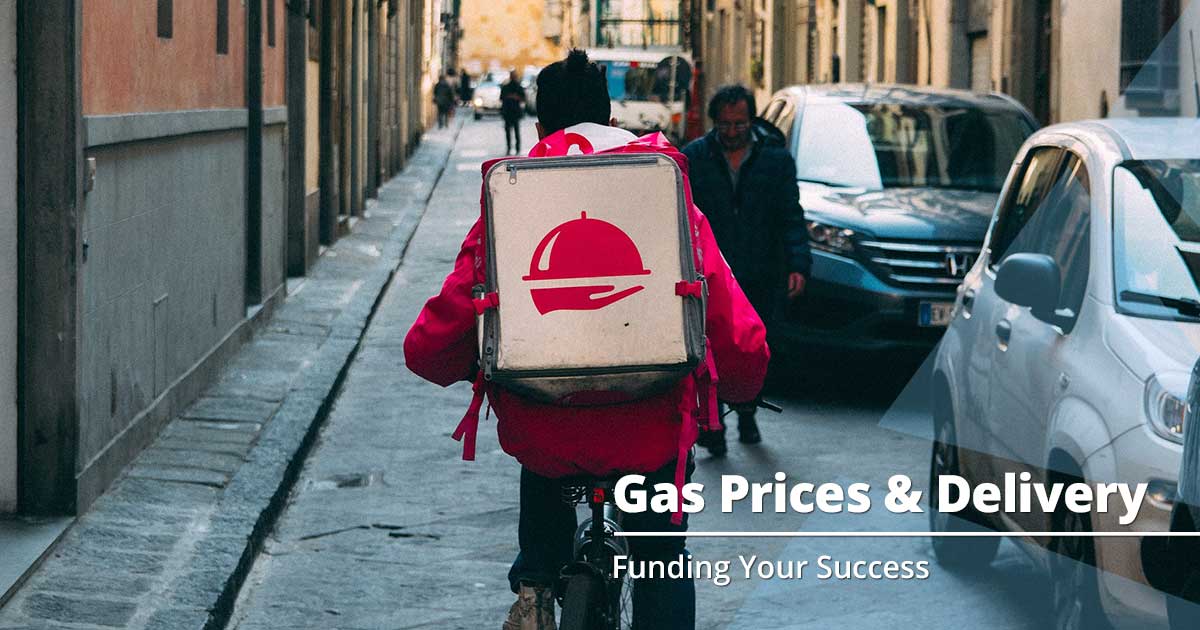How Gas Prices are Affecting Restaurant Deliveries

There’s a Russian-led war in Ukraine—call it an invasion, a conflict, whatever you choose. But it’s disrupting the lives of thousands of Ukrainians and Russians, and Russia is taking some major heat across the entire globe. There have been protests and boycotts against the war—it’s devastating, to be sure. And one of the major impacts we’re seeing nationwide are rising prices at the gas pumps. With the average price of gasoline hitting $4.31/gallon as of this writing, consumers are feeling the pinch. Prices haven’t been this high in nearly 15 years. And why is that? It’s really complicated, based on a host of factors all seeming to converge at once. The pandemic easing and vaccines becoming readily available meant demand for gas increased, which inevitably drove up prices. But the war in Ukraine is also playing a huge role. According to the Washington Post, after Russia invaded Ukraine, the oil market started adding a “risk assessment” to oil prices. This “was compounded by sanctions banning U.S. banks from transacting with financial institutions in Russia,” and the Biden administration is moving toward banning Russian oil imports. Lack of supply and high demand produce price spikes—not just at the pump, but everywhere (including the grocery store).
With rising fuel prices touching just about every part of our lives, we wanted to focus today on the impact this is having with delivery drivers. Folks who work for companies like DoorDash and Grubhub, or even delivery drivers at your local pizza place, and also places like Meals on Wheels, are generally using their own vehicles. With the rise in gas prices, their take-home pay goes down. It’s an unexpected cost to have to absorb that fuel increase, so what does it all mean for drivers?
One company doing right by their volunteers is Meals on Wheels, who has opted to increase the financial reimbursement to those helping out. But a lot of workers, like those employed by DoorDash and Grubhub, don’t have that opportunity. With gas prices climbing higher and higher, it’s making less and less sense for them to continue working. According to a recent Wink article, DoorDash does say they help their employees find discounts on gas and car maintenance, but no word on an increase in salary.
Consumers are likely feeling the pinch with restaurant deliveries, too — there are often delivery fees associated with getting food dropped off at your doorstep, so that’s nothing earth shattering. However, some establishments are opting to raise that delivery fee. Perhaps this is to encourage folks to pick their food up themselves, or it’s to mitigate the uptick in gas costs. We could also start to see price hikes on food at restaurants if we haven’t already. No matter which way you slice it, the costs are getting transferred to the consumer.
This all sounds grim, but it’s likely temporary. Increased sanctions against Russia are putting pressure on them to retreat, as their economy and global standing deteriorate. As a small business owner, you may be finding yourself in a place where additional cash flow is needed to keep your business from missing a beat. Consider a bridge loan from ARF Financial, which can give you access to as much as $1,000,000 with repayment terms up to 36 months. Or, tap into a line of credit so you can be prepared for the unexpected and ensure your business runs strong.

